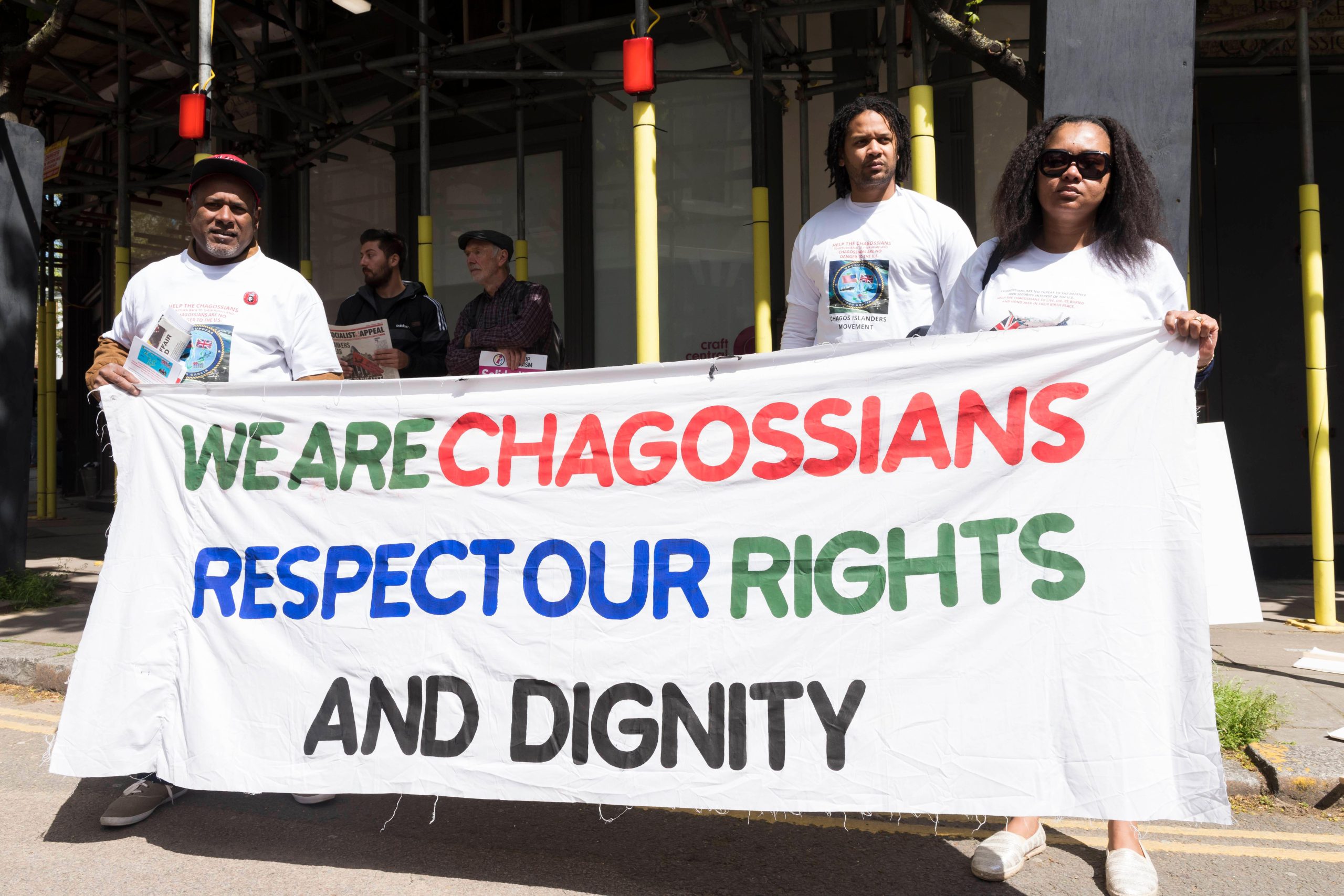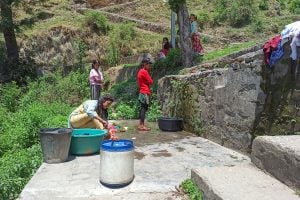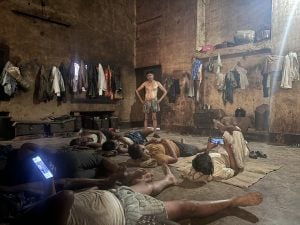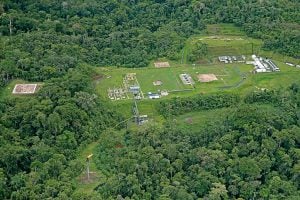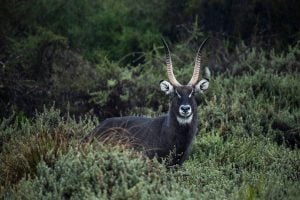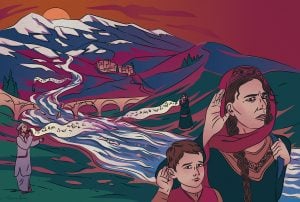Louis Olivier Bancoult was four years old in 1968 when a medical emergency took him and his family away from their island home in the middle of the Indian Ocean.
The 2,000-km sea journey from Peros Banhos in the Chagos Archipelago to Mauritius was planned as a temporary move so his sister could be treated after an accident.
But when they tried to return home, all channels had been sealed. The UK, which oversees Chagos – or what it calls the British Indian Ocean Territory – had leased part of one of the largest islands to the US, and local people were being evicted from the whole archipelago.
“Life was wonderful for every one of us but our right to live in our own birthplace was completely snatched from us,” he tells Dialogue Earth.
The rented area was turned into a US military base in 1971 as part of the Cold War imperative to tackle the Soviet Union. The base, on the island of Diego Garcia, is sometimes called an “unsinkable aircraft carrier”. It continues to serve a major geo-strategic function, enabling the US to undertake surveillance of the Indian Ocean and conduct military operations in Asia, Africa and the Middle East.
Bancoult, now 60, is the leader of the exiled Chagossian community. As chair of Chagos Refugee Group, he is at the forefront of a decades-long effort by ethnic Chagossians to reclaim their homeland.
This struggle has become enmeshed in conservation as well as geopolitics. In 2010, the UK turned the entire territory into a no-take zone where all fishing is banned. They did so without consulting either Mauritius, which claims the archipelago, or ethnic Chagossians.
The Chagos marine protected area (MPA) was once hailed as the world’s largest fully protected marine reserve. But disquiet at the treatment of Chagossians has led to it being removed from global databases of MPAs and cited as an egregious example of “ocean grabbing”.
“It was a cover for not allowing the resettlement of Chagossians and we challenge it,” says Bancoult.
An ocean paradise
In many ways, Chagos is a prime contender for marine protection. The islands offer refuge to vulnerable species including turtles, manta rays, and sharks and are home to extensive reef systems. There are 300 different species of coral, including the Chagos brain coral (Ctenella chagius) and the largest coral atoll in the world – the Great Chagos Bank.
As envisaged by the 2022 Kunming-Montreal Global Biodiversity Framework, MPAs are a key policy for governments including the UK to achieve an agreed global “30×30” target. This states that 30% of the ocean, as well as 30% of the land, should be protected by 2030. To date, there are 18,200 MPAs, covering 8.1% of the ocean, recorded on the Protected Planet database.
A marine protected area is a defined zone of water under some kind of human-activity management.
MPAs range from highly protected reserves where people are almost entirely excluded, to areas where some activities such as fishing are allowed but others such as oil drilling are not. This has led to concerns that inconsistent use of the term is causing confusion and giving a misleading impression of the proportion of the ocean that is actually protected.
Conservation groups say that for MPAs to be effective they often need the highest level of protection, with near-zero human activity or at least near-zero extraction. But this can conflict with local peoples’ right to live and fish in areas they have used for generations.
The Kunming-Montreal framework “was adopted with the premise to recognise the rights of Indigenous peoples and local communities,” says Hugh Govan, an expert on marine protection and governance at the University of the South Pacific in Fiji. “Chagos seems to be one of the most overt examples of ocean grabbing in the world,” he adds.
This grab, Govan says, was originally perpetrated by the eviction of local people for the military benefit of distant powers. “Consolidation of the grab was attempted via the surprise and unilateral announcement of the Chagos marine protected area,” he adds.
Conserving Chagos’s brilliant biodiversity
The MPA has its fans though, even among those sympathetic to the plight of the Chagossian people.
Scientists say the islands are especially important given their very good coral reef cover amid a global coral crisis linked to warming waters.
The marine protected area is desperately needed because the islands are vulnerable to illegal fishing, biodiversity loss, invasive species, plastic pollution, and climate change, says Sarah Puntan-Galea, director of the Chagos Conservation Trust, a charity working to protect the archipelago.
“It is a haven for many other vulnerable and unique types of wildlife, including 800 different species of fish, from the endemic Chagos clownfish to 50 different types of sharks, coconut crabs and other invertebrates, and is a globally important bird area with 175,000 breeding pairs of seabirds,” she says.
Puntan-Galea believes that the MPA around the islands “presents neither a legal nor a practical barrier to Chagossian return”. She says her organisation fully supports the Chagossian communities and believes local people can and should play a role in the conservation and protection of resources on which they depend.
“If resettlement happened, the current conservation arrangements would need to be discussed and can be adapted to accommodate the needs of future Chagossian communities,” she says.
Conserving while upholding local rights
Chagos is not the only place where announcement of an MPA has clashed with the rights of local people.
In 2010, the same year the Chagos MPA was announced, Chile created an MPA around the South Pacific island of Rapa Nui without consulting the local community. This triggered a conflict between the government, conservation NGOs, scientists on the one hand and local communities on the other.
Many Indigenous people and local communities around the world conserve or sustainably manage their areas. Some experts believe they may do so more effectively than more top-down and officially recognised MPAs.
After the initial outcry, the Rapa Nui MPA tried to facilitate this bottom-up approach. Local communities were involved in its governance and allowed to use artisanal fishing gears for livelihood and sustenance. They have supported the protection as a result.
Ensuring the rights of local people is now a major focus of several conservation groups as countries push for more MPAs to align with the 30×30 target.
“Recognition and respect for local communities is incredibly important,” says Jessica MacCarthy, a conservation analyst at the Marine Conservation Institute in the US.
She notes “the need for improvement in consultation and informed discussion around local and Indigenous communities in MPA designation, management and processes.”
Both the World Database on Protected Areas (WDPA) and Marine Protection Atlas, two leading marine-conservation organisations, have removed Chagos from their databases of protected areas.
The WDPA said in April that the removal aimed to “align the WDPA with UN cartography guidance”, as the UN has ruled in favour of Mauritius in an ongoing dispute with the UK over ownership of Chagos.
The Marine Protection Atlas followed suit. Elizabeth Pike, director of the atlas, told Dialogue Earth: “Until the Chagossian people decide what they want, we won’t count Chagos as protected.”
The fight for tuna rights
In May, the Chagos conflict surfaced at a meeting in Bangkok of the Indian Ocean Tuna Commission (IOTC), which decides how much tuna can be caught in the region. The ownership of Chagos could determine who gets a seat at the table to influence major decisions on these commercially valuable species.
Mauritius says Chagos is an integral part of its territory. It gained independence from the UK in 1968, but by then the British had split off the archipelago as a separate colony. The International Court of Justice and the UN General Assembly have both ruled in favour of Mauritius on this issue.
Now, Mauritius says the UK cannot continue to be a “coastal state” under IOTC rules. If the UK is not in charge of the Chagos Islands, then it has no Indian Ocean coasts.
“Mauritius is the only coastal state that can represent the Chagos Archipelago in the IOTC,” wrote Jagdish Koonjul, Mauritian delegate to the IOTC, in an official note.
Jess Keedy, the UK delegate to the body, wrote that talks between the two nations were ongoing. “The UK remains committed to providing clarification on its membership status at the earliest opportunity once negotiations have concluded,” she wrote.
A UK foreign office spokesperson told Dialogue Earth that the next stages of negotiations with Mauritius on the future of Chagos will take place after the UK’s general election, which recently concluded. In the meantime, the spokesperson added, UK officials continue to routinely engage with their Mauritian counterparts.
The spokesperson did not respond to questions about whether Chagossians should be part of current or future negotiations.
Fifty years of hurt
Last year, Chagossians commemorated 50 years of the deportation of the last residents from their islands. The community is now scattered across the UK, Mauritius and the Seychelles.
They increasingly fear the loss of their identity and some say Mauritius is now issuing new identity documents to displaced Chagossians that list them as born in Mauritius, erasing their Chagos connection.
“They want us to forget the place of our birth. But we will never forget,” says Bancoult, the Chagossian leader.
“We are not against protection of marine biodiversity. We are the real guardians of the Chagos because it is our home.”
Editor’s note: In October 2024 the UK agreed to hand the Chagos Islands over to Mauritius, with both countries committing to work together on marine protection.


